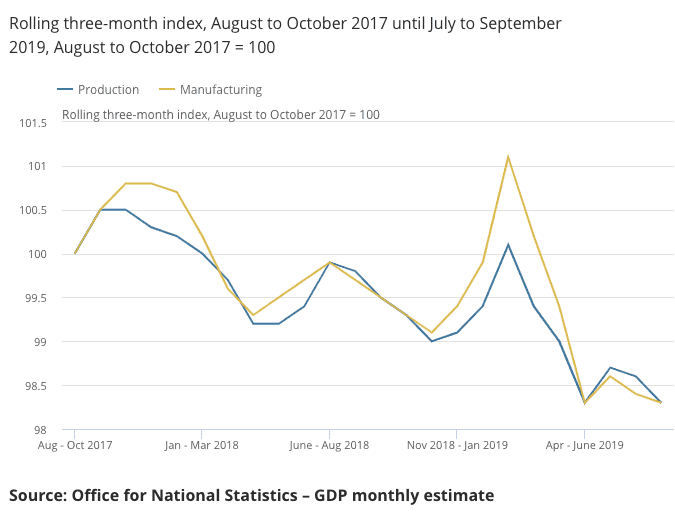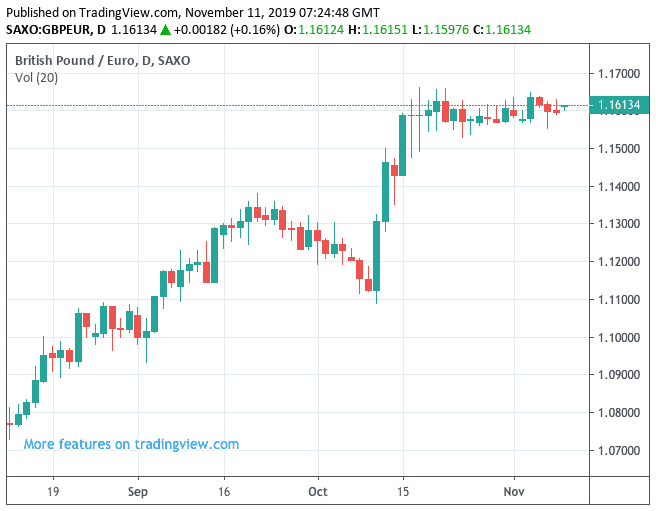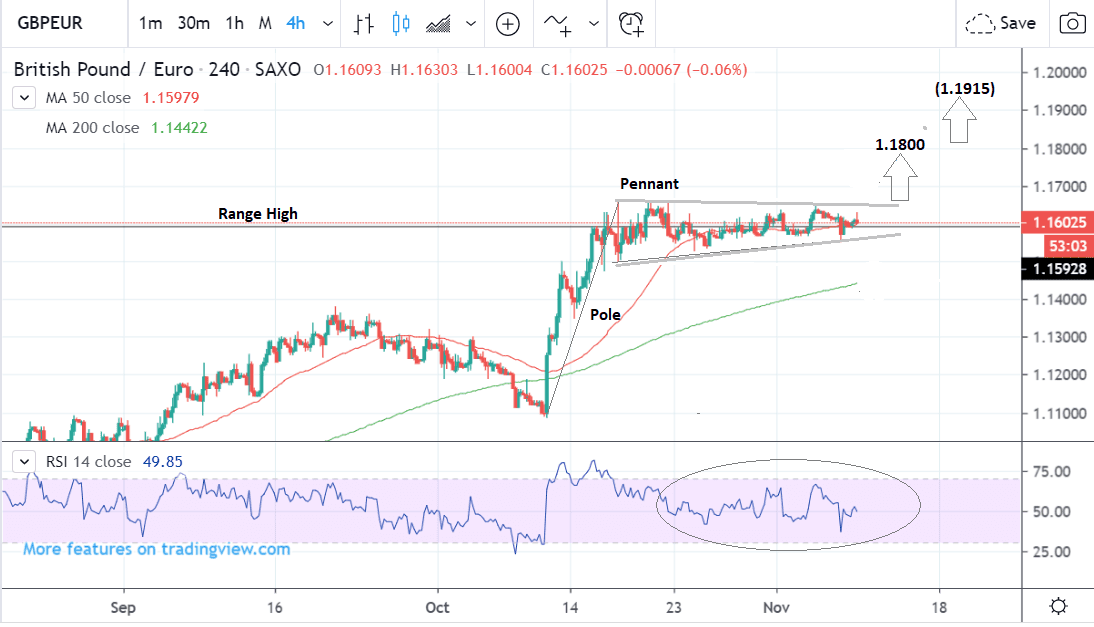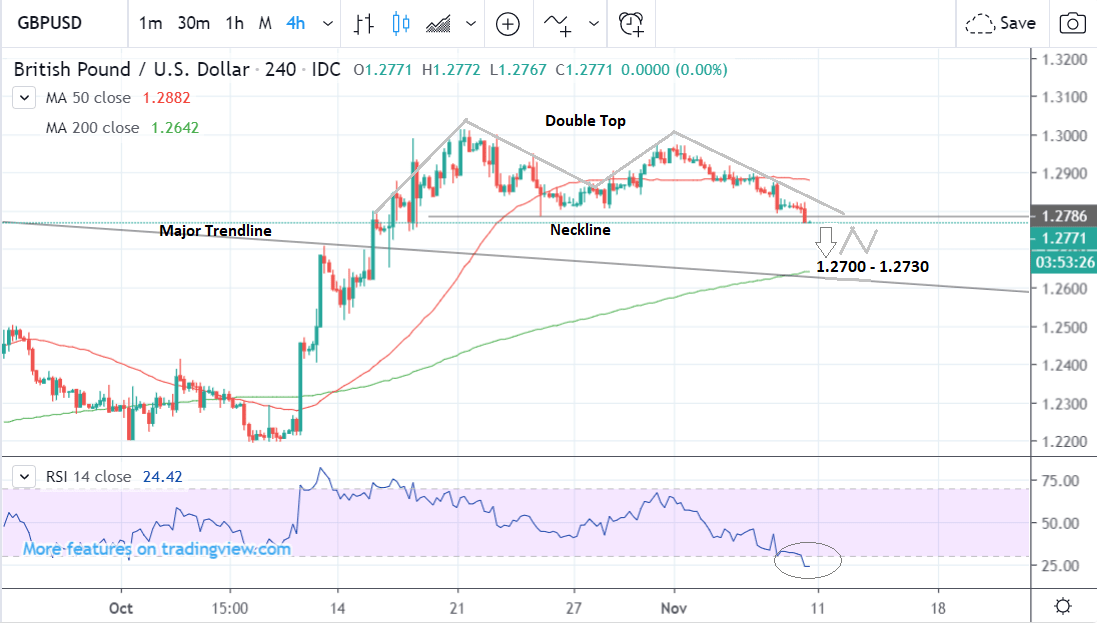GDP Growth Falls to Decade Low, but Sterling Remains Fixated on Polls
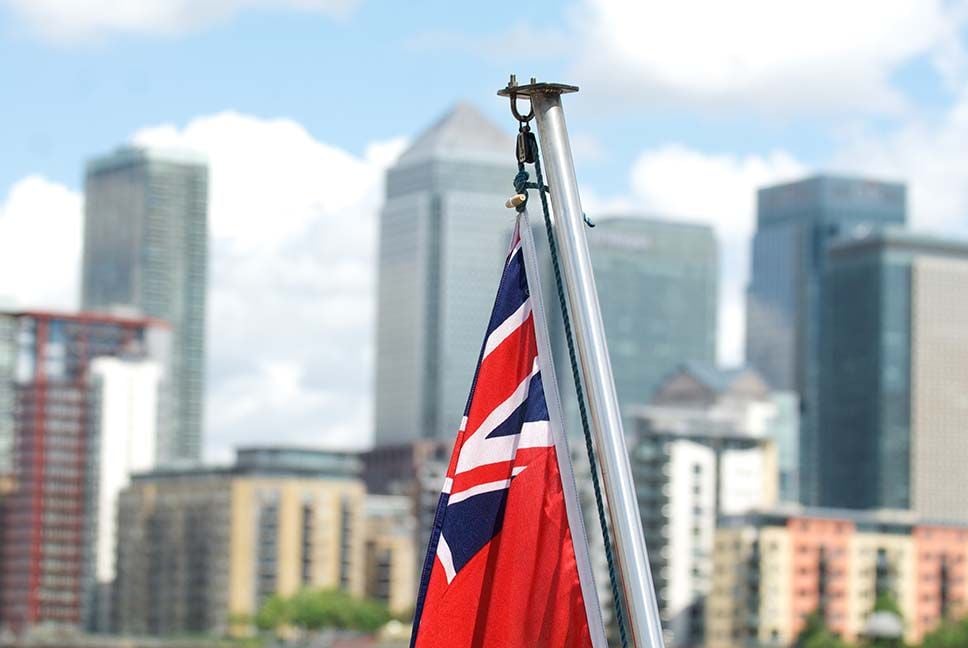
Image © Adobe Images
The British Pound openened the new week relatively firm against the Euro, U.S. Dollar and other major currencies, despite economic growth data missing expectations and suggesting the UK economy is barely keeping its head above water.
UK GDP for the third quarter came in at 0.3%, a much-improved reading on the previous month's -0.2% contraction, meaning the economy has avoided registering a technical recession.
However, the 0.3% reading disappointed against expectations, as markets were expecting a figure of 0.4% to be delivered. In short, the rebound is lacklustre, and if we dig beneath the hood and look at the details we see an economy that is struggling to gain traction.
The annual rate for GDP rests at just 1.0% in the third quarter, this is the slowest rate of growth for the UK economy in a decade. "Intensifying Brexit uncertainties over the last three years have gradually eroded the UK’s underlying growth momentum. After averaging 0.6% in 2015, the average quarterly pace of growth has slowed each year since then," says Kallum Pickering, an economist with Berenberg Bank.
A look at the broad suite of numbers released by the ONS alongside the headline GDP figures shows further disappointment with UK monthly manufacturing production for September reading at -0.4%, where markets were expecting a reading of -0.3%.
Monthly industrial production for September read at -0.3%, against expectations for -0.2%.
“GDP grew steadily in the third quarter, mainly thanks to a strong July. Services again led the way with construction also performing well. Manufacturing failed to grow as falls in many industries were offset by car production bouncing back following April shutdowns," say the ONS in a statement accompanying the data release.
The UK's dominant services sector - which accounts for over 80% of economic activity - was the main driver to GDP growth in the three months to September 2019.
"A rebound in exports, stable gains in household consumption, and a continued pickup in government spending lifted the UK economy out of its Q2 slump," says Pickering. "Intensifying Brexit uncertainties over the last three years have gradually eroded the UK’s underlying growth momentum. After averaging 0.6% in 2015, the average quarterly pace of growth has slowed each year since then."
Despite an improvement in the UK's export volumes, the ONS reports the UK's trade balance slipped further into deficit with the September balance coming in at -12.54BN, against expectations for a reading of -10BN.
The Bank of England last week signalled they were shifting their bias towards delivering an interest rate cut, as opposed to raising interest rates as was previously the case, owing to the slowdown in the UK's economic data trajectory. Today's weak GDP read come out today this bias will be reinforced and markets will likely increase expectations for a 2020 rate cut. "The surprise decision of two members of the Bank of England’s Monetary Policy Committee to vote for an immediate reduction in Bank Rate has seen financial markets increase the probability it attaches to a near-term rate cut. Markets now see a 1 in 3 chance of a 25bp reduction in Bank Rate by the end of January," says NIkesh Sawjani at Lloyds Bank.
The Pound dropped following last week's Bank of England meeting, as currencies tend to fall when their issuing central bank signals they are likely to shift into an interest rate cutting cycle.
Nevertheless, the Pound's reaction to the Bank of England event was short-lived, and we continue to expect any currency reaction to economic data to be relatively short-lived in nature owing to the market's ongoing fixation with the December 12 General Election.
"The slowdown highlights the pains of political uncertainties linked to Brexit and the upcoming general election on 12 December. Despite the rebound in real GDP, at 0.5%, the quarterly pace of nominal GDP growth was the slowest of the year so far. The UK’s best chance of a sustained economy recovery rests on the Conservatives winning a majority in just over four weeks time before delivering an orderly Brexit on 31 January," says Pickering.
Above: Sterling-Euro is showing a preference to consolidate around 1.16, therefore any moves away from this point should be faded
Polls have been relatively consistent over the past few weeks, showing a Conservative lead of around 10 points, enough to deliver a majority to Prime Minister Boris Johnson that would allow him to pass his Brexit deal and take the UK out of the ongoing Brexit impasse.
Such an outcome would be positive for the economy in that it unlocks pent-up investment and provides some confidence to investors.
As such, the Conservative = good / Labour = bad dynamic for Sterling is likely to continue to play out.
![]()
Weekend polls were relatively consistent with the narrative that the Conservatives should be able to secure a majority.
However, these are early days yet for the campaign and polls do shift, therefore we remain wary that the British Pound is prone to move either higher or lower in response to the polls.
"A Conservative majority is indeed seen as the single most likely outcome, if Betfair’s prices are a guide to market expectations. But there are multiple layers of uncertainty
around this. If the Brexit Party follow through on their promise to stand candidates in most constituencies, and their share of the vote starts to rise again, many Con/Lab marginals would fall to Labour as the “leave” vote splits," says Adam Cole, a foreign exchange strategist with RBC Capital Markets.
"With five weeks to run, a swing to Labour that is sufficient to get them into government in coalition (with the LibDems and SNP) is well 15 within the bounds of possibility," adds Cole.
Time to move your money? Get 3-5% more currency than your bank would offer by using the services of a specialist foreign exchange specialist. A payments provider can deliver you an exchange rate closer to the real market rate than your bank would, thereby saving you substantial quantities of currency. Find out more here.
* Advertisement
Pound-Euro Week Ahead Forecast
The Pound-to-Euro rate opens the new week at 1.1592 after rising 0.15% in the week before. Studies of the charts show the pair pausing at the top of a long-term range, with bullish price patterns indicating a bias towards more upside in the future.
The 4 hour chart - used to determine the short-term outlook, which means the coming week - shows how the pair is trading at the top of a long-term range which might act as a ‘glass ceiling’ to further upside.
At the same time, however, it is forming a possible bullish continuation pattern called a ‘pennant’, which - subject to a breakout higher - might suggest substantial upside potential.
If the exchange rate can successfully rise above the top of the pennant, defined as the 1.1661 October 17 highs, it will probably confirm a continuation higher to a target at 1.1800 initially, and then perhaps 1.1915, in the short-term.
Although momentum is declining (circled) and suggests a risk of a bearish breakdown it is not a game-changer, and would only raise concern should the pair break below the 1.1525 lows. If that were to happen, a move down to 1.1350 could be possible.
The top of the range is a tough ceiling for the exchange rate to crack so our bullish forecast is dependent on a break to new highs.
Nevertheless, given the overall bullish trend, a continuation is marginally favoured.
Pound-Dollar Week Ahead Forecast
The Pound-to-Dollar exchange rate opens the new week at 1.2774 after falling 1.24% in the week before.
Studies of the charts suggest immediate mild weakness on the horizon followed by a sideways trend and the possibility of eventual upside in the long-term.
The 4 hour chart - used to determine the short-term outlook, which includes the coming week or next 5 days - shows the formation of a bearish topping pattern called a double top.
The double top is an ‘M’ shaped pattern which is a reliable indicator of impending weakness.
Normally we could expect a substantial break lower to follow, however, some strong support levels lie not far south in the 1.2700- 1.2730 range, and these are likely to provide a hard floor from which the exchange rate may bounce.
The RSI momentum indicator has fallen below the 30 level distinguishing neutral from oversold, suggesting a risk the pair may rebound.
This combined with the tough support floor suggests a possibility it could end its sell-off in the lower 1.27s and then perhaps enter a rangebound market with a ceiling in the 1.28s in the short-term.
Time to move your money? Get 3-5% more currency than your bank would offer by using the services of a specialist foreign exchange specialist. A payments provider can deliver you an exchange rate closer to the real market rate than your bank would, thereby saving you substantial quantities of currency. Find out more here.
* Advertisement

